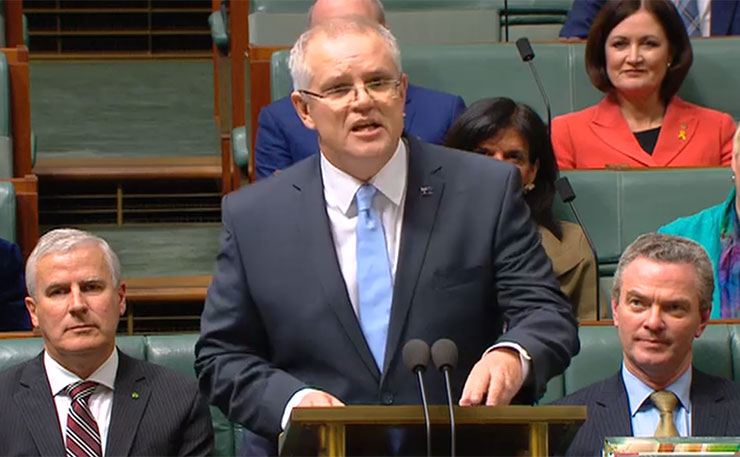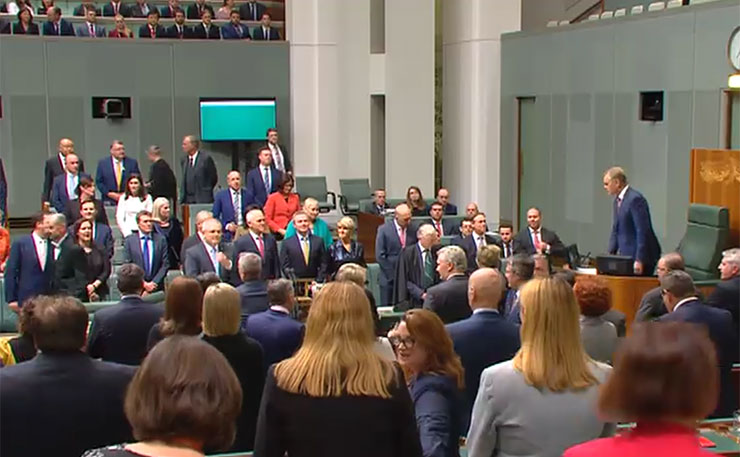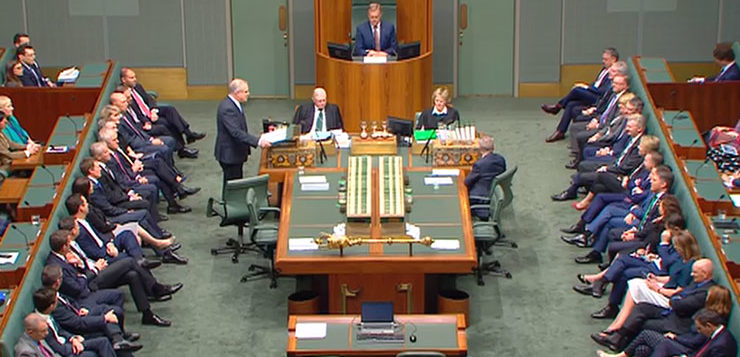The Budget is a proposal for an unashamed handout to the already privileged that cannot be justified on economic grounds. It has nothing to do with the national interest; rather it is a desperate political bid by a panicking government, writes Ian McAuley.
“What does it mean for me?” was how the Treasurer introduced the budget. It’s not about the nation or the community. Rather it’s a pre-election pitch to the privileged.
A figure you won’t find in the Murdoch Press is the cost to revenue of tax breaks for earnings from superannuation funds. This year it’s budgeted to cost $23 billion: that’s more than twice the government’s budget for education. And it’s growing at 11 per cent a year, making it one of the fastest growing items in the budget.
These are the tax breaks that allow a well-heeled retired couple to enjoy a tax-free income of $200,000 a year, as I explained in an article last month. That income would attract $53,000 income tax if it were taxed in the same way as the income of working Australians is taxed.
That’s the story of this budget – a story of tax not collected because of breaks and privileges given to the already privileged. Some of these breaks appear in the budget papers. Many more do not, such as the $3 to $4 billion annual subsidy to the well-off who avoid paying the Medicare Levy Surcharge, because they hold private health insurance. Nor does the budget list the cost of tax evasion, a practice shared by huge multinationals and small businesses ripping off young workers, secure in the knowledge that the Government has no intention of putting a tough cop on the beat.
What the budget does expose, however, is an extraordinary re-structuring of the tax scales. In part it is an upward shift in the brackets at which higher levels of tax kick in. That’s an uncontentious move because some of these brackets have not moved since 2013.
But the other part of the proposal is to do away entirely with the 37 per cent tax bracket, which in plain terms, means that someone with an income of $40,000 would face the same marginal tax rate as another person with an income approaching $200,000. Under the same re-structuring someone with an income of $40,000 would be paying $200 less in tax than they do today, while someone with a $200,000 income would enjoy a tax reduction of $7,000.

Even more extraordinary is the fact that the government is promoting this proposal: the tables are all in a document with the Orwellian title “Stronger growth to create more jobs” to be found on the budget website. It’s as if Marie Antoinette, rather than keeping her “let them eat cake” indiscretion to the confines of the Versailles Palace, made sure it was out there as a tweet gone viral.
Then there is Morrison’s fetish of keeping taxes to a cap of 23.9 per cent of GDP. The closest I can find to any justification is the statement “the cap ensures the Government lives within its means by not imposing an increasing tax burden on Australians over time, which would adversely affect growth, costing jobs and investment.”
I think what he is really trying to say is:
“You ignorant masses may want more public goods, but we know better. You may be willing to pay more tax to have better schools, a properly-funded health system, a cleaner environment, the ABC and better public transport, but we’ve decided that you should be spending your money in the private sector. On poker machines, on private health insurance, on road tolls. That’s where corporate profits are to be made – in the private sector. Not in public goods.”
His justification for a 23.9 per cent cap is bunkum. In any event it’s a Commonwealth cap. State and local governments also collect taxes, and while they receive support from the Commonwealth-collected GST, they also raise taxes to support essential services. Hospitals, schools and policing, all intrinsically labour-intensive services, take up 60 to 70 per cent of state budgets, and when they have to raise taxes they have a very narrow base.
State and local taxes on property transfers, motor vehicles and payrolls are generally regressive and inefficient, but they have to turn to them because of stringency from the Commonwealth. It is hardly surprising therefore, that over the last 10 years, state and local government taxes have risen from 4.7 to 5.9 per cent of GDP.
So that means our total taxes are around 30 per cent of GDP (23.9 per cent + 5.9 per cent). But that’s still well below the average 36 per cent of other high-income OECD countries. Germany’s taxes are 38 per cent of GDP, Denmark’s 46 per cent. As Miriam Lyons and I show in our work Governomics: can we afford small government?, small taxes do not make for economic prosperity; in fact countries with inadequately funded public goods – infrastructure, research, education, health care – suffer as a result. A successful economy needs a mix of public and private goods, and Australia is almost certainly well off the optimum mix.
And while we’re on to infrastructure, we can forget all those well-publicised promises announced just before the budget. There’s no actual funding appropriation for these projects, only a promise that they will proceed before 2027-28. When Peter Costello said most Australians will be dead before government debt will be paid off, he could have added that we will be dead before there is a train to Tullamarine Airport or a safe Bruce Highway.

It’s pointless to try to analyse the budget in terms of economics, for apart from a few measures to support the Coalition’s model of crony capitalism, and a re-commitment to its policy of exploiting the young to support privileged “baby boomers”, it shows no coherent economic thinking.
But it is a carefully-crafted political document, all with an eye to the coming election. As former Liberal Party Leader John Hewson says, it’s the mother of all political budgets.
First, there is the $530 tax offset for most taxpayers. That will be paid as a lump sum, which, as any behavioural economist can confirm, is much more noticeable than an equivalent $20 tax reduction in one’s fortnightly pay.
Second, is the cut to the ABC’s funding. By my reckoning, comparing this year’s and last year’s budget, the ABC stands to lose nearly $100 million over the next three years. In Turkey the government throws independent journalists into jail; here a punitive cut to the nation’s most trusted media source may be sufficient to ensure media loyalty to the ruling party.
Third is the projection of a $2.2 billion cash surplus by the end of 2019-20 – a razor-thin 0.1 per cent of GDP. The supposed accuracy is spurious. This year’s fiscal outcome has been serendipitous, mostly resting on a temporary higher price for mineral commodities. Although present economic indicators look impressive, they are fragile. We’re too dependent on the Chinese economy, our export base is too concentrated in a few bulk commodities, we have very high household debt, and we face an imminent fall in house prices.
But the figure is there on paper, and even the most modest spending proposal by Labor would flip it into a deficit.
That’s the absurd cosmetics of our fiscal obsession. And if Labor proposes raising taxes, even if they are in undisputedly economic and just ways, such as a carbon tax, or a crackdown on family trusts, Labor would be breaking the sacred commitment to a 23.9 per cent cap.
In an extraordinary splash on the ABC on Wednesday morning the normally cool Turnbull went into a rant about the dire risk of a Shorten Government, as if he, Morrison, Dutton and their mob are all that is protecting us from the economic vandals at the gate.
They’re panicking.
Donate To New Matilda
New Matilda is a small, independent media outlet. We survive through reader contributions, and never losing a lawsuit. If you got something from this article, giving something back helps us to continue speaking truth to power. Every little bit counts.




